
 |
|
| Home | BUS-eum 3, a traveling TRACES exhibit |
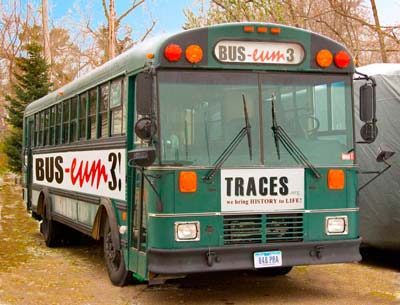 |
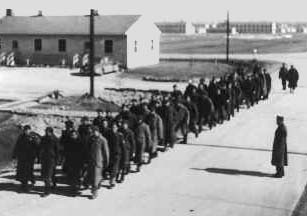 |
|
The BUS-eum 3 awaits visitors |
German POWs in Kansas,
circa 1944-45 |
ABOUT THE EXHIBIT
During World War II the United States was home to over 660 base and branch prisoner of war camps, which held some 380,000 German POWs who found themselves imprisoned in almost all of the then-48 United States and the territory of Alaska. Millions more Axis and Allied POWs were held in other camps in Europe, the Soviet Union, Canada, Australia and Africa. While Axis and Soviet POWs were both the perpetrators as well as victims of dictatorial governments and state-sponsored violence, POW experiences on all sides embody ageless and timely themes of war and peace, justice under arms, and issues regarding human rights, international reconciliation and future conflict avoidance.
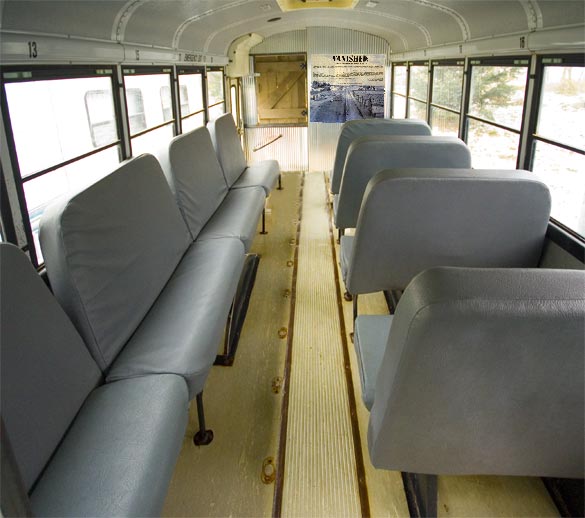 |
The
BUS-eum 3 Theater seats up to 21 exhibit visitors |
TRACES brings this unusual, rich story to life through the creation of the BUS-eum 3—a 40-foot school bus converted into a mobile classroom and museum. The exhibit consists of 15 narrative display panels illustrated with photographs and documents, audio and DVD documentaries, artifacts and more. This exhibit will visit both large and small communities from Minnesota to Texas, then New Mexico to Florida and South Carolina between Labor Day 2009 and Memorial Day 2010; the following tour will cover the Atlantic Seaboard from North Carolina as of Labor Day 2010 to Maine by Memorial Day 2011. Showing slots will be limited, and awarded on a first-come, first-served basis. Hosts should budget in the exhibit fees now, as funding for public institutions continues to grow tighter in these uncertain economic times.
BACKGROUND
The German POWs held in U.S. Army-operated camps across the United States were sent out to harvest or process crops, build roads and waterways, fell trees, roof barns, erect silos, work in light non-military industry, lay city sewers and construct tract housing, wash U.S. Army laundry and do other practical wartime tasks. With the high rate of 19th-century German immigration to "Amerika", many of those who worked with POWs spoke to them in their native tongue; some even had relatives or former neighbors among them. In the process, they formed significant, often decades-long friendships with “the enemy” and underwent considerable changes as individuals and as a group—thus fundamentally influencing postwar German values and institutions, as well as American-German relations. A number of POWs even chose to immigrate to the United States after the war.
While American soldiers and airmen were in Europe, blasting German cities to rubble, some German soldiers sat out the rest of the war after being captured—behind barbed wire, on the American Homefront. While here, some secretly dated local girls, sneaked into corner bars, and darkened movie houses, and some even took correspondence courses for which they would earn college credit back in postwar Germany. All this occurred while a vicious global war raged on beyond the peaceful shores of the faraway New World, claiming over 55 million lives and laying entire countries to waste. This exhibit documents the contradictions and ironies of both war and imprisonment—above all to stimulate reflection, discussion and insight.
Held on the Homefront explores the human context of the POW experiences. Implicitly, it addresses five primary questions:
—Were German POWs generally treated well or poorly while held captive in the United States? How has the treatment accorded to enemy POWs during the Second World War impacted the standing of the United States both in Europe and in the world at large?
—In which contexts and settings did German POWs encounter Americans? Were those encounters generally positive or negative? For which side—and what were the lasting impacts of those encounters?
—What role did art play in the POWs’ experience?
—How did the POWs’ perceptions of the United States, of Americans and of democracy evolve from the point of their arrival in the U.S. (generally from 1943-45) till their departure from the U.S. (in summer 1946), as well as once they returned to Germany (or Austria)?
—How did the German POW experience affect German-American relations, both immediately after the war and for the half century thereafter?
AND SOMETHING NEW!
With the goal of showing this exhibit in most of the communities that were home to base or branch German-POW camps, we ask local hosts to invite their patrons to bring stories, photos, letters, artwork or other “traces” of their families’ direct encounters with German POWs during WWII with them, to a given showing, to share with others visiting the exhibit. We’d like them to speak about their experiences; having local high-school or college students, or historical-society volunteers, film their narratives would be an excellent, low-budget way to expand the impact of the exhibit. Even more powerful would be if former German POWs, their widows, grand-/children or friends might be present, too. (With the collapsing dollar, a trip from Germany/Austria to the US that might have been unaffordable before, might well be possible now.) We also would like to post patrons’ essays, letters, related documents or other images on our related blog: Encounters
This “person-to-person” aspect of our BUS-eum 3 exhibit is new; never before have we so directly facilitated U.S.-German “reconciliation” (if you will). Our other exhibits did not lend themselves to such efforts as easily as this one, so how exciting, that some six decades after that bloody, incomparably destructive World War former POWs, their family and friends might meet with their counterparts from “the other side” and simply share stories of how war affected all their lives. This is a rare opportunity! In a world of war like ours at present, such steps are important, indeed.
TO BOOK THE EXHIBIT
The BUS-eum will bring Held on the Homefront to hundreds of communities and enrich their historical awareness of their connections to the greater World War II drama. The exhibit will appeal to both children and senior citizens, as well as to urban and rural residents. Valuable discussion and reflection will be sparked amongst diverse audiences about local history and culture, and about current issues related to military service and war. TRACES’ motto is “We bring HISTORY to LIFE!” That mission will be furthered when the BUS-eum tours the very region whose local experiences are explored by TRACES’ unique exhibits.
For more information, to book a showing or to make a donation towards this project, contact:
TRACES651.646.0400 / fax .8070
BUS-eum
3 exhibit panels:
|
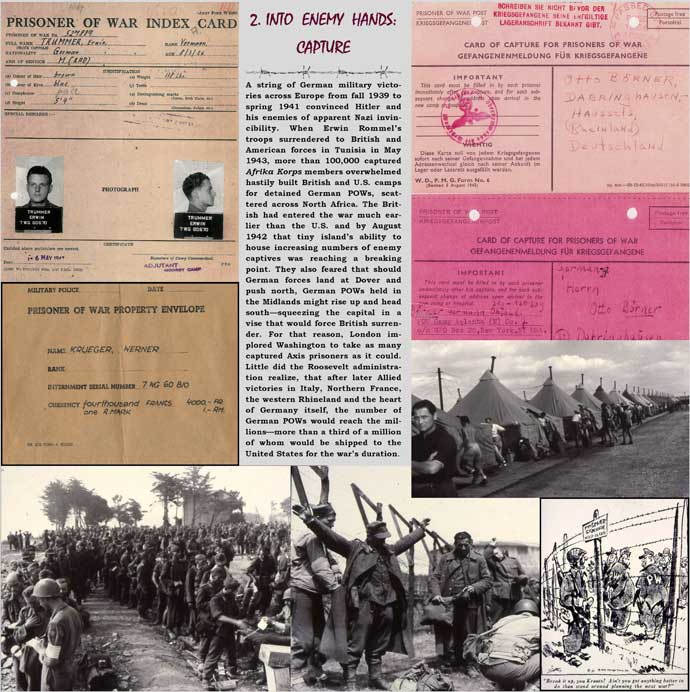 |
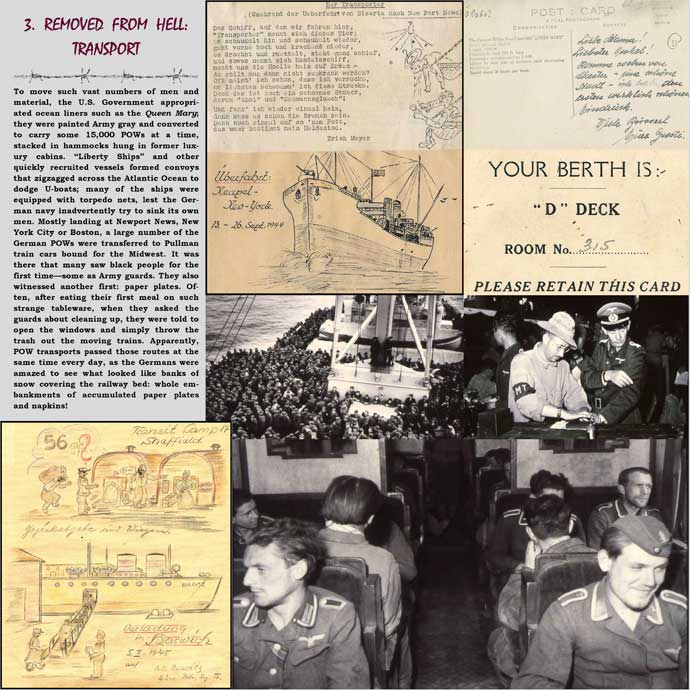 |
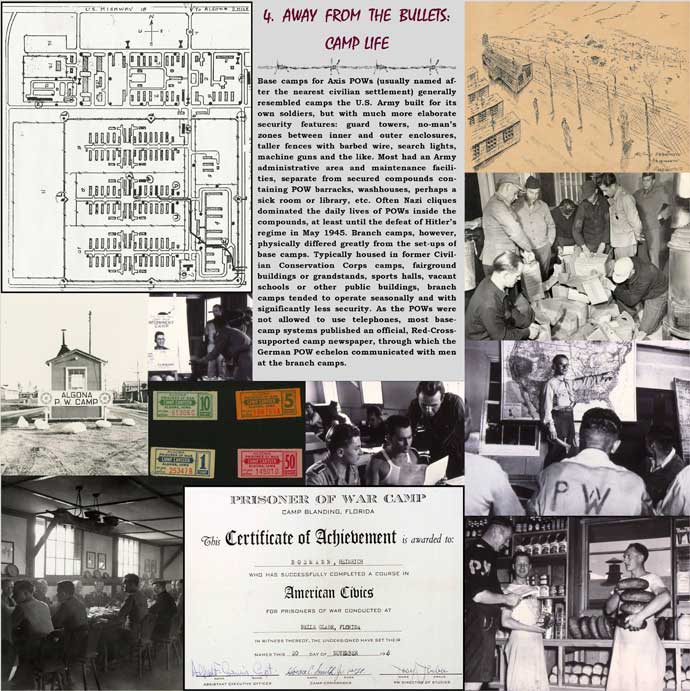 |
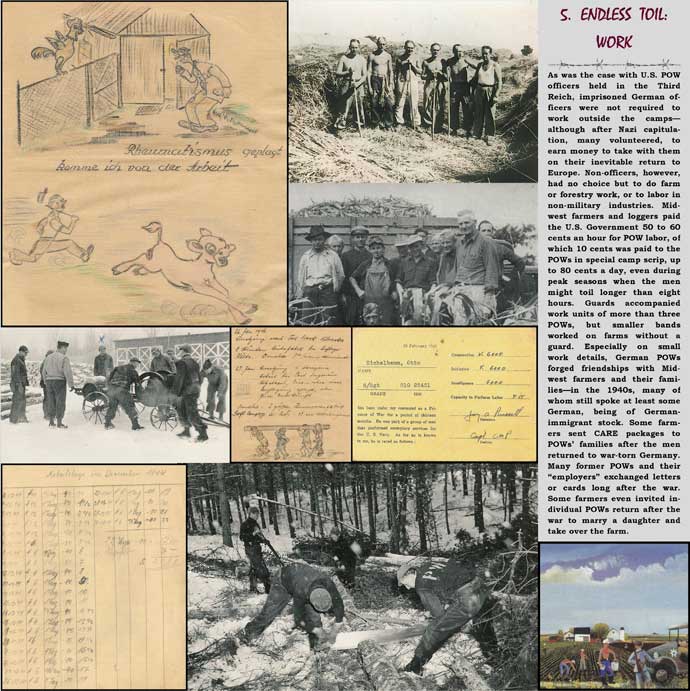 |
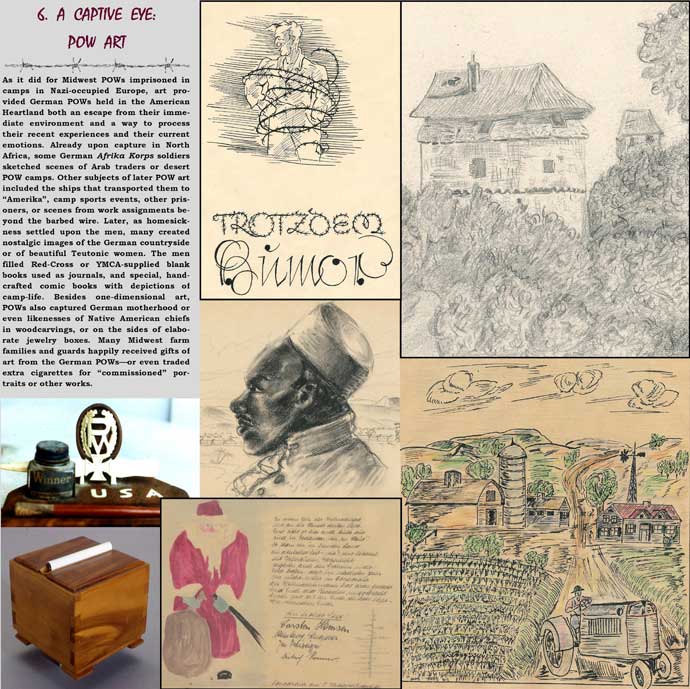 |
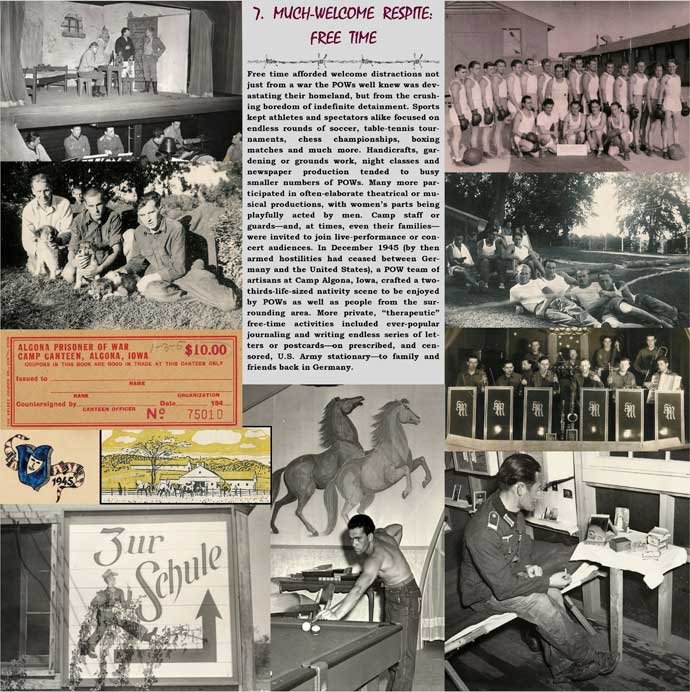 |
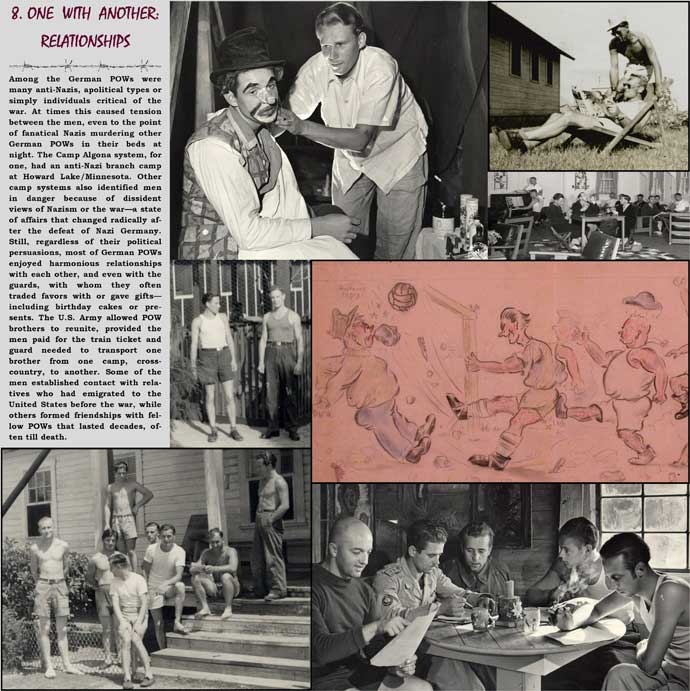 |
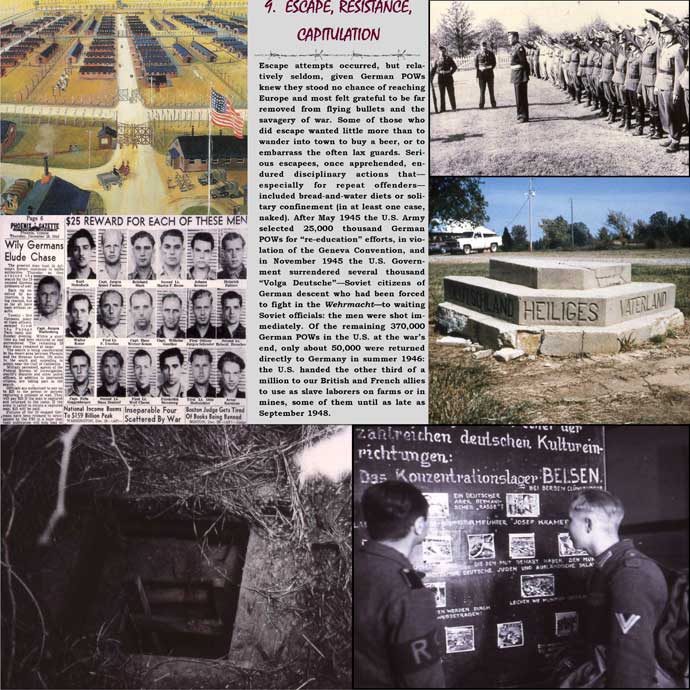 |
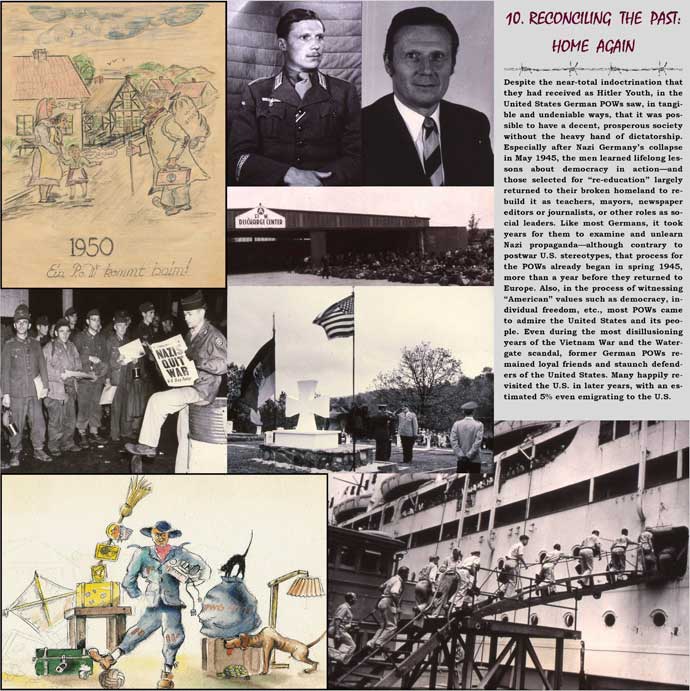 |